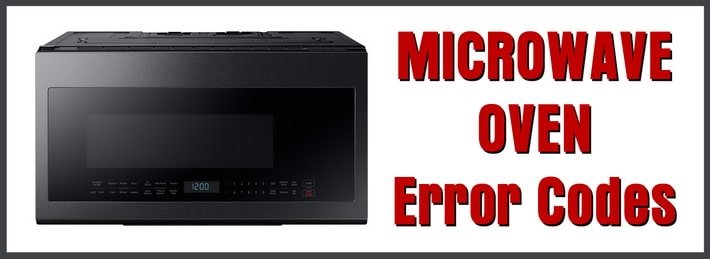
Imagine having your favorite dinner waiting to be reheated quickly, only for your microwave to flash an E1 error code, stopping your culinary plans in their tracks. It’s like being ready to rock a concert and realizing your guitar string just snapped. Frustrating, right? But here’s the deal: rather than facing this inconvenience over and over, let’s focus on how to prevent it from happening altogether. By following a few simple maintenance tips and understanding what to look out for, you can keep your microwave running like a dream.
Understanding Samsung Microwave Error Code E1
Before diving into prevention, it helps to know what you’re dealing with. Error Code E1 often points to a problem with the microwave’s temperature sensor or the ventilation system. Think of this sensor as the thermometer for your microwave. It ensures everything’s at the right temperature so your food cooks perfectly. But if it gets confused or blocked, it’s like trying to bake cookies in a cold oven – not very effective. This is where error codes come into play, acting like your microwave’s way of saying, “Hey, something’s off here!”
Another common cause is poor ventilation. Your microwave needs to breathe, just like you, and when its vents are clogged or blocked, it can overheat, triggering that pesky error. Picture your microwave as a runner. If its airflow is obstructed, it’s like making a sprinter run with a stuffy nose. Not ideal, right? So, understanding these basic principles gives you the upper hand in troubleshooting and prevention.
Finally, electrical issues or power surges can also contribute to this error. Much like a sudden jerk can throw off your balance, an unexpected power spike can confuse your microwave’s system. However, regular checks and some quick fixes can often prevent these mishaps from occurring. With this groundwork laid, let’s delve into some simple steps to help you keep your microwave free of E1 errors.
Routine Maintenance for Optimal Performance
To prevent Error Code E1 from creeping up again, regular maintenance is key. Just as you’d service your car to keep it running smoothly, your microwave also benefits from a little TLC. Start by checking the temperature sensor. If you feel confident, you can gently clean it, ensuring it’s free from grease or food particles. If this seems daunting, don’t hesitate to consult a professional for peace of mind.
Ventilation is another crucial aspect. Regularly inspect the vents on your microwave and make sure they’re free from obstruction. It might sound simple, but dust and debris can accumulate over time, much like lint in a dryer filter. Simply wiping the vents with a clean, damp cloth can improve airflow and prevent overheating.
Lastly, safeguard against electrical issues by using a surge protector. An unexpected power spike is like a lightning bolt to your microwave’s system, potentially causing serious damage. A surge protector acts as a buffer, protecting your appliances from electrical surges. Investing in one is a small price to pay for preventing big headaches down the line.
Recognizing the Signs Early
Spotting early warning signs can prevent the Error Code E1 from becoming a regular nuisance. If you notice your microwave isn’t heating as efficiently or seems to be overheating, it might be time to take a closer look. Just as a car engine might start making strange noises before breaking down, your microwave often gives subtle hints when something’s amiss.
Be attentive to unusual noises or smells coming from the microwave. A burning smell can indicate an overheating issue, much like a scorched pan on a stovetop. Addressing these signs promptly can prevent more significant problems and extend the lifespan of your microwave.
If you’re frequently seeing error codes, it might be worth considering how you’re using the appliance. Overloading your microwave with too much food or using it for extended periods can strain its systems. Think of it like working out too hard without rest – even the fittest athlete needs recovery time. So, if you’re a frequent microwave user, consider giving it short breaks between long cooking sessions.
Preventative Tips for Long-Term Care
Prevention, as they say, is better than cure. By following a few simple habits, you can ensure your microwave stays error-free. Start by cleaning it regularly, both inside and out. Much like a clean workspace can boost your productivity, a clean microwave performs better and lasts longer. Use mild soap and water for cleaning, avoiding harsh chemicals that could damage the interior.
Consider the location of your microwave as well. It should be placed in a well-ventilated area, away from heat-producing appliances. Think of it like setting up a cozy reading nook – you wouldn’t want to cram it in a stuffy, hot corner, right? The same goes for your microwave; the better airflow it has, the happier it will be.
Lastly, stay informed. Keep your microwave’s manual handy and don’t hesitate to refer to it when needed. It’s like having a personal trainer for your microwave – full of valuable insights and guidance. By understanding the specifics of your model, you can troubleshoot minor issues yourself and know when to call in a professional for help.
In summary, preventing Samsung Microwave Error Code E1 involves understanding the root causes, regular maintenance, and being proactive with early signs. With these tips, you can keep your microwave functioning efficiently and enjoy hassle-free cooking for years to come.